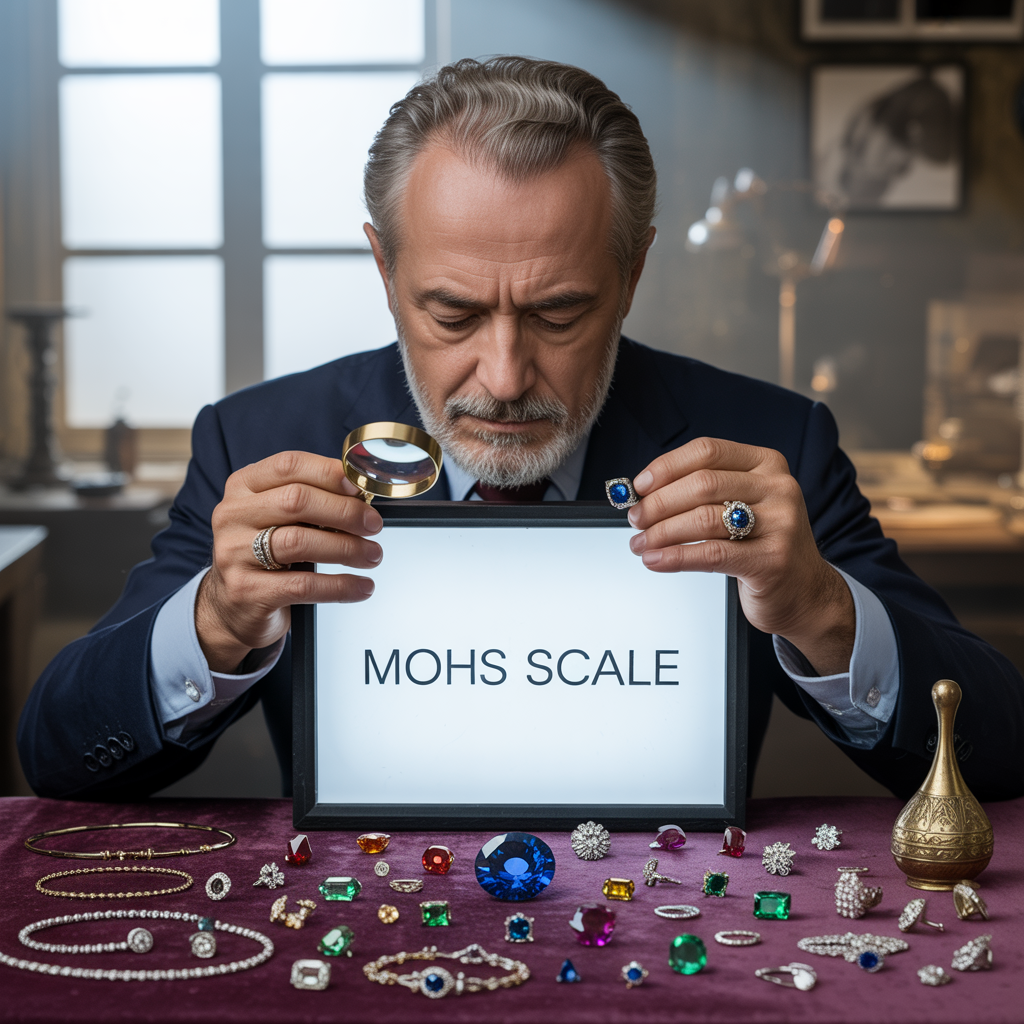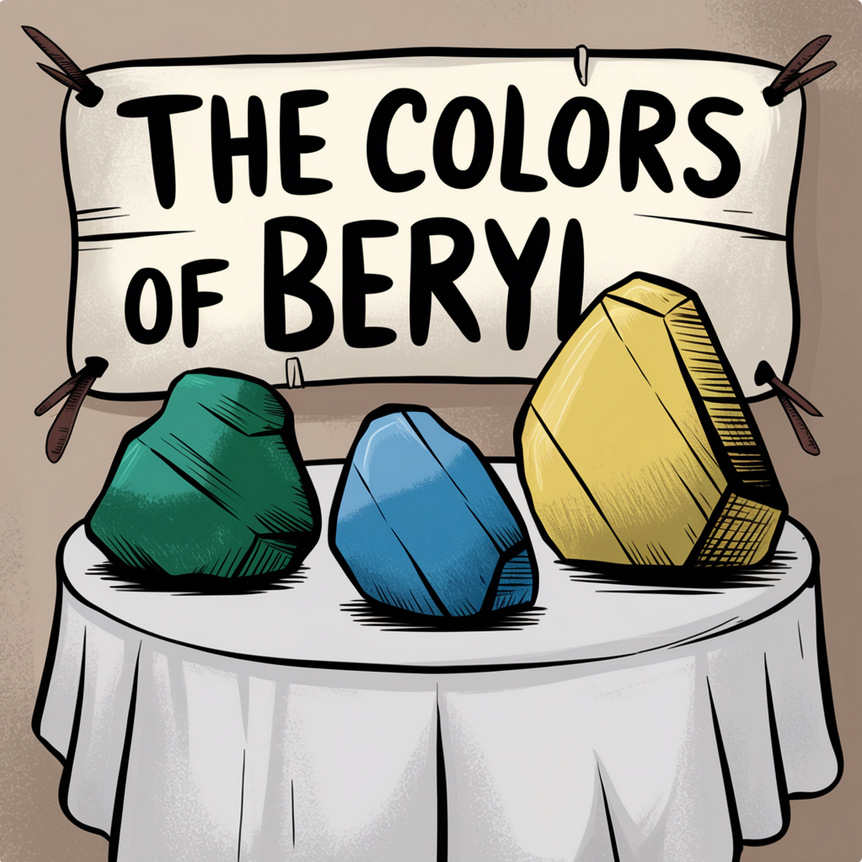Amethyst Gemstones
Ametrine Gemstones
Aquamarine Gems
Alexandrite Gems
Garnet Gems
Amethyst Gemstones
Ametrine Gemstones
Aquamarine Gems
Alexandrite Gems
Garnet Gems
What Color is Garnet?
by Jeff Moriarty April 13, 2023
Video Transcription
Hi, I'm Steve Moriarty from MoreGems.com, and today I am here to discuss with you the colors of garnet. Our first exposure to garnet was probably the Bohemian garnets from Czechoslovakia, type of pyrope that was readily available and used widely as accent stones in jewelry probably for centuries. My first exposure to garnet was when I just started cutting, and the material coming out of Kangala in Tanzania was probably the most exciting thing in the industry at the time because it was much lighter garnets that had ever been produced because garnet particularly in the red garnets is overly dark. And you can cut it as fine as you want, put as many facets on it as you want, and it just remained dark. But this material out of Kangala was much, much lighter material, it was a rhodolite, which is a mixture of pyrope and almandine.
There's two separate groups of garnets, the Pyralspites and Ugrandites, pyrope, almandine, spessartite, and then the uvarovite, grossular, and andradites. And we'll show you several of them here tonight. Like I said, the first one is a pyrope-almandine, this is a piece I gave my wife back in the 80s. In a nice large size, it's about 10 carats in size, which before that time you just couldn't produce a garnet with this lighter color in any size over one or two carats. Rhodolite garnet, this is a rough that is rhodolite or some when it's light enough call it umbalite. So this will produce a nice big stone, another 10 carat, 15 carat maybe. And here's a cut stone that we cut recently, not from Kangala, Kangala is no longer producing but another source in Tanzania. So the Umba Valley is producing, and Mahenge are the two big producers currently, and we're also getting material like this out of Malawi and Mozambique.
Here's another piece, I think this is more in the pyrope. This came out of Morogoro in Tanzania, very, very light color. And here's a Malaya garnet, my favorite of gems. This one I also gave to my wife. This is just under 10 carats, kind of a peachy pink. Malayas are pyrope and spessartite and often have almandine in them also. Malaya is actually a Swahili word out of the family prostitute because when they found them, they were looking for the rhodolites. They wanted the rhodolites very marketable, this color came out and they just thought they had no value, and actually turned out they were much greater value than what the rhodolites were.
Here's another of the red garnet, this is pure pyrope. This is chrome pyrope from Arizona, and chrome pyrope is probably the reddest of all the garnets. Hard to show red, but this is probably redder than most rubies. Now, up till the discovery of this next gem, the colors of garnets were every color except blue. I don't know how many times I told that to people. Garnets come into every color except blue. But then we had the color change garnets, and they went from a color change of kind of violety red to blue or blue-green, but they do have a blue component, and some of them very strong blue component. So that kind of ruled out the doesn't come in blue, although we didn't talk about that because half the time it was more violet. But then again, in the early 2000s, a supply of blue garnets came out of, again, I think it was Tanzania.
So these garnets do a color change when you go from daylight to incandescent. And when you go to daylight, which this is a poor representative of daylight, but it will go much more blue-green, this one more blue in daylight, and when you go to incandescent and they go much more red. So this was the start of the demise of the thought that garnets don't come blue because part-time these were blue and then later in the early 2000s, new supply was found that was blue all the time.
Now, garnets come in every color of the rainbow. So one other type of garnet that's part of the Pyralspites is spessartite, and this piece actually has a combination of pyrope-almandine and a pure spessartite. This particular spessartite known as Fanta orange spessartite comes from Tanzania, and is probably the orangest of all the spessartites. I do have online, you'll see more orange spessartite from Madagascar. Spessartite is kind of special because real high refractive index, so you get really great brilliance out of it. So some of the newest of the pyrope-almandines or pyrope-spessartite because these are commonly known as Malaya and I think that's probably because they have spessartite, and it is the only reason I can think of that they're calling a Malaya. They're quite pink and very, very light. I mean these colors previous to this source, in Mahenge, you just never got garnets this light, the brilliance is great, and just because of that lighter color, that particular source has produced probably for the last seven, eight years and now is of limited production, but they're producing these light pinks and the peachy color Malayas.
Other garnets produced about the same time, what are known as purple garnets, grape garnets. We have all sorts of names for all these different colors of garnets. The purple garnets, when you look at them, they do have the tint of amethyst in them. They're coming out of Tanzania and also Mozambique. This is an example of umbalite, umbalite is just a very, very light road light color. And then we move into the Ugrandites, this is Hessonite which is a type of grossular garnet. Most of these come from Sri Lanka. Did miss this crystal here. This is a big specimen that comes from mineral mic, this is a spessartite garnet. This is a dodecahedron there, they're all the garnets crystallized in the cubic system. This habit is dodecahedron, but really cool crystal. That's like same sources out of Tanzania.
And here we have a Mali garnet out of Mali. These come this kind of green color to a yellow color. Like most garnets, you don't see them very big, two carat typically as large as you'll see. And then we come to some very important garnets, very important as far as very expensive. The Tsavorite, again, these are grossulars. So the Tsavorite range of color goes from lighter, which we know as Merelani Mint, Merelani Mint is a byproduct of the Tanzanite mining, and just a lighter color than Tsavorite, kind of that bluish green. And this is crystal of Merelani Mint.
And then you go into a little deeper color, this we start calling Tsavorite a lighter but more intense than the Merelani Mint, they're both grossular garnets. And then onto the deepest, finest color of Tsavorite. And this is a piece of rough for Tsavorite garnet, really fine green should cut carat, carat and a half, and a mounted piece. And here we have another specimen of Tsavorite garnet, very large piece. And here's an example of demantoid garnets. Demantoid, what's special about those? Very high refractive index and extreme dispersion even beyond that of diamond. So we've been using, this is accents in pieces we're making, just because you get a diamond like brilliance and a unique color combination. So these demantoids are andradites, and there's one family we didn't discuss, which are a type of green garnet, which is the Ugrandites, and they just don't come big enough to cut into jewelry pieces.
So I hope you've learned a little bit about the color of garnets. If you have any comments, leave them below in the comment section, and please remember to like and subscribe to see all of our upcoming educational videos.
Jeff Moriarty
Jeff Moriarty has been in the jewelry industry for almost 20 years. His family now only owns a retail jewelry store in Crown Point, Indiana, but he also travels the world with his father in search of rare gemstones.
Leave a comment
Comments will be approved before showing up.
Also in Jewelry, Gemstones, News and Cool Stuff

Ruby vs. Garnet: How to Tell the Difference Between These Red Gemstones
by Jeff Moriarty July 17, 2025
Read More
The Truth About Gemstone Hardness and Durability: What High-End Buyers Need to Know
by Jeff Moriarty July 16, 2025
Read MoreSubscribe
Sign up to get the latest on sales, new releases and more …



